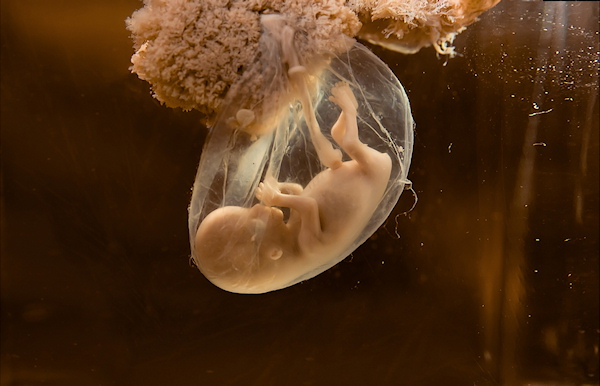Yet again, the Supreme Court has declined to hear a pro-life case and resolve disputes at the lower judicial levels. In one terse sentence, the justices rejected an appeal that attempted to stop embryonic stem cell research that arguably violates U.S. law.
A Quick Background
Often, information about stem cell research is quite complex. There are plenty of debates concerning what exactly is moral, when we should make exceptions, and when exactly the benefits outweigh the moral dangers, if ever. Put simply, most pro-lifers agree that embryonic stem cell research is morally wrong because it involves the destruction of human embryos.
Granted, some – and perhaps many – of these embryos would be destroyed regardless, but does their imminent destruction make it any more moral for scientists to experiment with human babies? If anything, supporting embryonic stem cell research encourages the destruction of “unwanted” embryos – such as the “extras” left over from fertility clinics. It encourages parents and doctors to be careless with how many embryos they create during IVF because, after all, if the “extras” can be donated to research and destroyed, at least they have a purpose, right?
This type of thinking entirely misses the fact that human beings ought never to be viewed as “extras,” “unwanted,” or created for the purpose of destruction. Such thinking is inherently immoral for any human civilization.
Instead of embryonic stem cell research (which actually has medical and financial concerns, besides the moral ones), most pro-lifers support adult stem cell research. Adult stem cell research is extremely promising and has already been successful.
Adult Stem Cells and Cord Blood
The website Stem Cell Research Facts sums up the benefits of adult stem cells appropriately:
Adult stem cells are a “natural” solution. They naturally exist in our bodies, and they provide a natural repair mechanism for many tissues of our bodies. They belong in the microenvironment of an adult body, while embryonic stem cells belong in the microenvironment of the early embryo, not in an adult body, where they tend to cause tumors and immune system reactions.
Most importantly, adult stem cells have already been successfully used in human therapies for many years. As of this moment, no therapies in humans have ever been successfully carried out using embryonic stem cells. New therapies using adult type stem cells, on the other hand, are being developed all the time.
Cord blood is another creative and moral solution to finding stem cells. Scientists need the ability to experiment with stem cells, but the bottom line is that the stem cells need to be harvested in a moral way that does not participate in the destruction of human life. According to the Cord Blood Registry:
While research using cord tissue is at an early stage and medical treatments are not available today, the future holds many possibilities. Currently, more than 30 clinical trials worldwide are exploring the use of cord tissue stem cells as therapy for conditions like heart disease, stroke, spinal cord injury, cartilage injury, liver disease, diabetes.
The Case
U.S. law forbids our National Institutes of Health from paying for the creation of human embryos who will then be destroyed for research. Yet some believe that there is still a gray line involving embryonic stem cell research. In 2009, President Obama issued an executive order concerning using embryos for research. This order “expanded federal funding for research involving human embryonic stem cells.” Specifically, Obama “limited the funding to research on stem-cell lines derived from embryos that come from fertility clinics and were going to be thrown away otherwise.”
Shortly after the order, two scientists involved with adult stem cell research brought a case. They challenged that their ability to obtain federal grants for their work was in danger and that the NIH was not following the proper procedure for handling public objections to the new standard. One lower court put an injunction on Obama’s order, but the appeals court reversed. Now, the Supreme Court has refused to hear the debate, and Obama’s executive order will stand.
Some believe that this case did not directly challenge the executive order’s violation of current law, but instead focused on procedural issues. (This was arguably also the situation with the personhood case from Oklahoma that the Supreme Court rejected last year.) Reuters reports:
Tony Mazzaschi, a director at the Association of American Medical Colleges, said … the researchers’ petition raised narrow, procedural questions rather than the fundamental issue of whether the law allows NIH to fund such research.
The Lesson
It’s often a matter of opinion whether a case deals with procedural side issues that courts can easily dismiss or with fundamental issues that actually challenge or attempt to uphold the law. However, pro-lifers should learn from this stem cell case and from the Oklahoma personhood case. Perhaps we need to be unequivocally direct in our cases. Perhaps we should leave no doubt in the courts’ minds regarding exactly what we are challenging. Perhaps we ought to leave no loophole to let the courts squeeze past and ignore the true issue of life at hand.
Determining how to frame a case is always difficult, but pro-life attorneys would be wise to evaluate these two cases and decide if any lessons in strategy and presentation can be learned.
In the end, it’s a sad day when our highest court refuses to hear a case where its members could have come down on the side of life. As Steve Aden, senior counsel for Alliance Defending Freedom, says:
Americans should not be forced to pay for experiments that destroy human life, have produced no real-world treatments and violate federal law — especially in burdened fiscal times like these.








